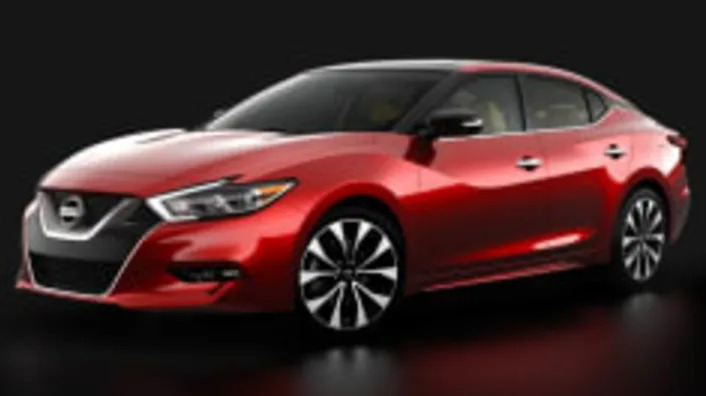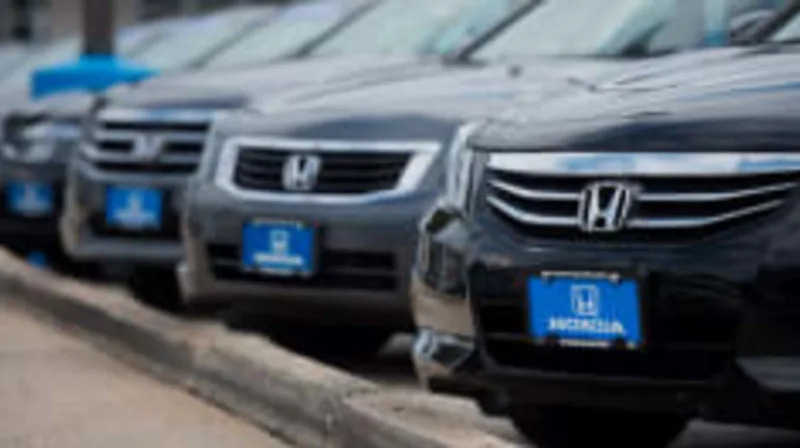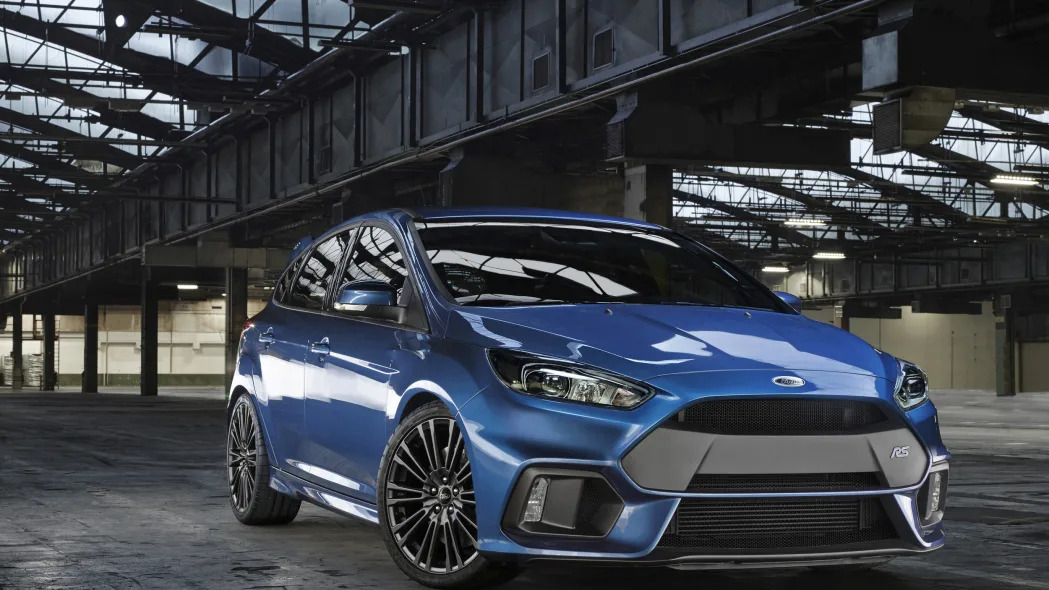Monday was Groundhog Day. Tuesday, apparently, was Sports Car Day.
The Ferrari 488 GTB, the Ford Focus RS and the Porsche Cayman GT4 all debuted within hours of each other ahead of their rollouts at the Geneva Motor Show. Three sporty machines, three vastly different approaches – and a lot of implications for enthusiasts.
That's a day worth repeating.
It also illustrates the opportunities automakers see in the performance market, which is expected to grow in the coming years. Ford estimates the segment has expanded 14 percent in Europe and surged 70 percent in North America since 2009.
The Detroit Auto Show was evidence of this, and performance cars of every stripe debuted, including the Acura NSX, Ford GT, Alfa Romeo 4C Spider and several others. This isn't a fad. Performance cars aren't going away.
The question is why?
Stricter CAFE standards are looming in the United States, as are tighter emissions regulations in Europe. And no one expects gas prices to remain low in America.
None of this matters for sports cars, and automakers are increasingly using them to elevate their images. That's why Dodge rolled out two 707-horsepower Hellcats last year. It's why Ford has decided to resurrect the GT for road and track. It's why in the depths of bankruptcy, General Motors continued work on the Chevrolet Corvette Stingray, not to mention the Z06.
"Great brands are made one car at a time," Ford of Europe president Jim Farley said at the reveal of the Focus RS.
Still, companies make those cars for different reasons.
The Ferrari 488 GTB, the Ford Focus RS and the Porsche Cayman GT4 all debuted within hours of each other ahead of their rollouts at the Geneva Motor Show. Three sporty machines, three vastly different approaches – and a lot of implications for enthusiasts.
That's a day worth repeating.
It also illustrates the opportunities automakers see in the performance market, which is expected to grow in the coming years. Ford estimates the segment has expanded 14 percent in Europe and surged 70 percent in North America since 2009.
The Detroit Auto Show was evidence of this, and performance cars of every stripe debuted, including the Acura NSX, Ford GT, Alfa Romeo 4C Spider and several others. This isn't a fad. Performance cars aren't going away.
The question is why?
Stricter CAFE standards are looming in the United States, as are tighter emissions regulations in Europe. And no one expects gas prices to remain low in America.
None of this matters for sports cars, and automakers are increasingly using them to elevate their images. That's why Dodge rolled out two 707-horsepower Hellcats last year. It's why Ford has decided to resurrect the GT for road and track. It's why in the depths of bankruptcy, General Motors continued work on the Chevrolet Corvette Stingray, not to mention the Z06.
"Great brands are made one car at a time," Ford of Europe president Jim Farley said at the reveal of the Focus RS.
Still, companies make those cars for different reasons.
Mainstream brands like Ford and Dodge want to build cars that get people talking, excite their bases and drive more potential customers into the showroom. They probably don't buy a Focus RS or a Hellcat, but suddenly the regular Focus hatch looks a bit hotter, and that V6 Charger seems to be just a touch more muscular.
The halo of performance is alive and well in the eyes of automakers and their customers.
"It's one of the most effective catalysts for ingenuity and innovation," said Joe Bakaj, vice president of product development for Ford of Europe.
That also leads to a trickle-down effect. Some of the technologies inevitably make their way to other products. It's hard to think the new all-wheel-drive system in the Focus RS that distributes torque front to rear and side to side won't be used in other vehicles.
It's different for Ferrari and Porsche. They don't need to be elevated, but they do have passionate fan bases that demand more and better products. There's also a financial reality: When all you make are performance cars, you better make money off it.
Enter the Porsche Cayman GT4, which is more powerful and expensive than the GTS, the previous top-of-the-line Cayman. The GT4 uses the 3.8-liter six-cylinder from the 911 Carrera S and other enhancements from Porsche's bin of go-fast parts. It also costs $84,600, which is $9,400 more than the GTS. But Porsche is quick to point out this isn't a trim level. It is a serious driver's car, and that notion is fortified by extensive testing on the Nürburgring, where the GT4 can clock a time of 7 minutes, 40 seconds.
Then there's Ferrari, a company that seemingly prints money. Anytime a new Ferrari is revealed it's big news in the car world, but the 488 GTB is also significant for its use of a turbocharged engine. Put simply: Ferrari doesn't do that often with its road cars. Hardly ever, in fact. But Ferrari is changing with the times, and that means more of its cars are getting turbo powerplants, something that kicked-off last year with the redesigned California T. The 488 replaces the 458 Italia and is one of Ferrari's signature models. Its use of a turbo V8 underscores this evolution.
With all of this hot new metal, it's an understatement to say that Tuesday was eventful. It was definitely better than Monday. The Groundhog saw his shadow, so we're in for six more weeks of winter. At least we have thoughts of three more performance cars to keep us warm.
Other News and Notes
 2016 Nissan Maxima, Le Mans racer, break cover
2016 Nissan Maxima, Le Mans racer, break cover
The 2016 Nissan Maxima broke cover this week in an unlikely spot: a Super Bowl commercial. The new generation of Nissan's flagship sedan showed up at the end of a spot that told the story of a racecar driver and his sometimes-distant relationship with his son. Later in the week, we got a better look at the new Maxima, when Nissan released two still photographs of the sedan. The Maxima looks a lot like the Sport Sedan Concept that debuted at the 2014 Detroit Auto Show, with prominent creases and piercing, angular headlights. The car will debut this spring at the New York Auto Show.
Meanwhile, sharped-eyed racing fans also saw Nissan's new Le Mans racer in the commercial. The GT-R LM Nismo will use a twin-turbo V6 paired with a kinetic energy recovery system, and it's significant for using an unconventional front-engine, front-wheel-drive setup. It will compete at the 6 Hours of Silverstone in April, though it will be on display next week at the Chicago Auto Show.
 New car sales continue to roll
New car sales continue to roll
January was another solid month for new cars sales, and volume leapt 13.7 percent to 1,151,123 units compared with last year, Autodata reported. The figures, reported on Tuesday, show renewed strength in the fullsize truck segment, which has been helped by low fuel costs. Experts say readily available credit and pent-up demand are also contributing to the gains.
While the US market is growing – as is China – other sectors, including Brazil and Russia, have been soft due to economic and financial issues. Russia, which was once viewed as the next major opportunity for expansion for automakers, has seen vehicle sales collapse 40 percent since 2012. Despite this, IHS Automotive projects global sales will reach 88.6 million this year, up 2.4 percent from 2014.
 Court orders Toyota to pay $11 million for 2006 crash
Court orders Toyota to pay $11 million for 2006 crash
A federal jury in Minnesota ordered Toyota to pay $11 million after a 1996 Camry was involved in a fatal crash that resulted in the driver spending about two and a half years in jail, the Associated Press reported. Koua Fong Lee crashed the Camry into another car in 2006, killing two people. A third passenger was paralyzed and later died.
Lee was sent to prison after the crash, but asked for a new trial in the wake of the Toyota recalls. Prosecutors declined to continue, and he walked free. He later joined with the other crash victims and their families to sue Toyota. Lee argued he tried to stop the Camry, but it wouldn't slow down.
Toyota countered that the 1996 Camry did not have a design defect – noting the car wasn't part of the company's recalls for acceleration problems – and said Lee could have hit the throttle instead of the brake pedal, AP reported. The jury said Toyota was 60 percent responsible for the crash, and blamed Lee for 40 percent of it.
Related Video:
















Sign in to post
Please sign in to leave a comment.
Continue